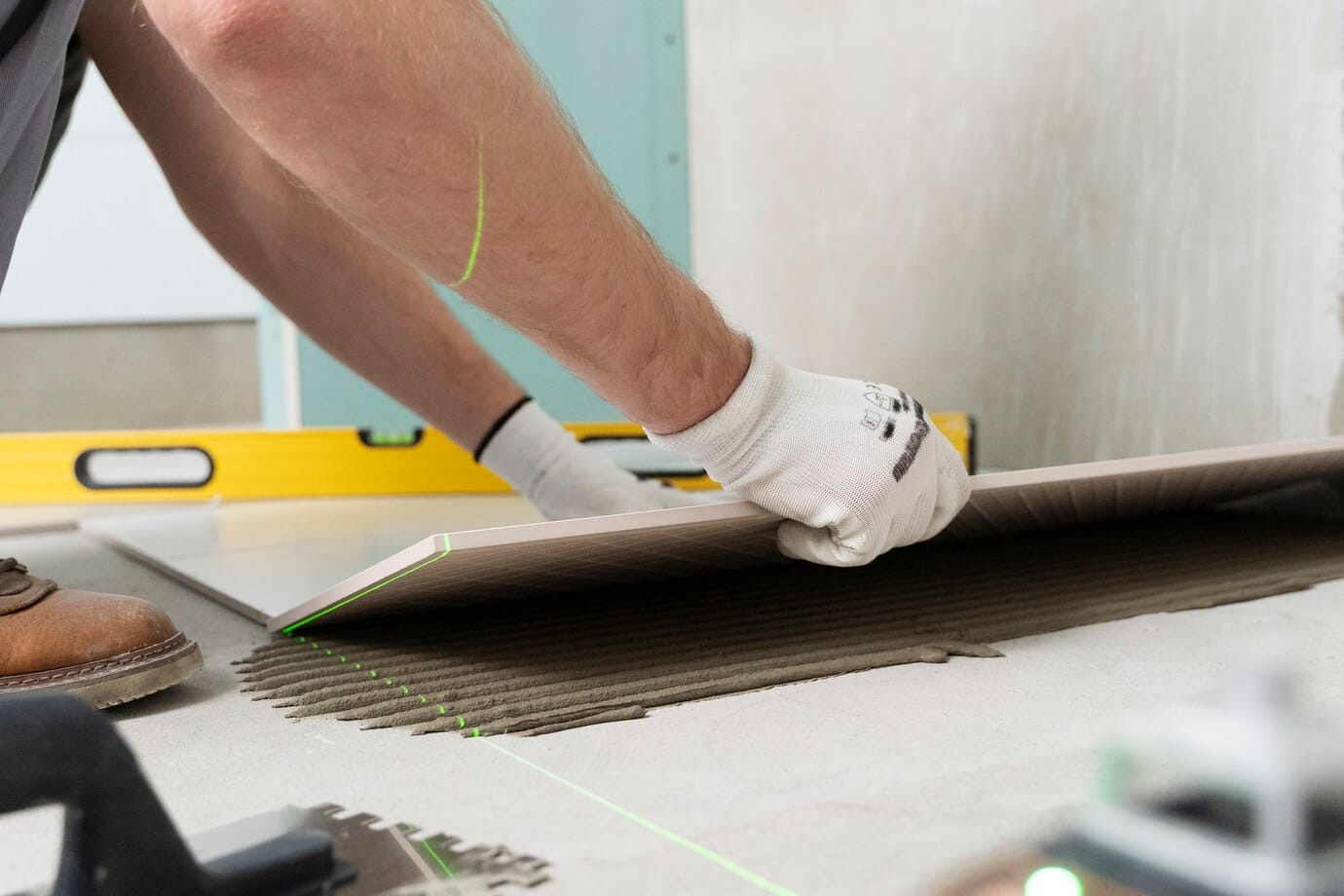Tile removal can be a daunting task, often revealing unforeseen obstacles and demanding considerable time, effort, and skill. Whether you're renovating a bathroom, updating a kitchen, or tackling any other tiling project, understanding and preparing for the potential challenges involved in tile removal is essential. It can help you minimise damage, reduce costly delays, and ensure a smoother process.
Tiles & Trims, the trusted supplier of tiling tools and materials to the trade and general public alike, is here to support you throughout your tile removal project. In this informative guide, we will discuss common issues encountered during tile removal and provide insightful advice on how to overcome these challenges. With this valuable knowledge at hand, you can confidently embark on your tile removal journey and pave the way for a successful renovation.
Difficulty in Removing Tile Adhesive
One common challenge during tile removal is dealing with stubborn tile adhesive that refuses to budge. Difficult-to-remove adhesive slows down the process and can damage the substrate or tile backer board if not handled appropriately.
Solutions:
- To soften the old adhesive, use a heat gun or a hairdryer to apply heat in a slow, steady motion, being cautious not to overheat the surrounding materials.
- Scrape away adhesive with a scraper, putty knife, or oscillating multi-tool equipped with a scraper attachment, working gently to avoid substrate damage.
- To remove any adhesive residue left behind, use a suitable adhesive remover and follow the manufacturer's instructions carefully. Be sure to test the product on a small area first to ensure it does not damage the substrate.
Risk of Damage to Surrounding Surfaces
Tile removal can result in unintentional damage to surrounding surfaces, such as walls, trim, or adjacent floor coverings, when not done diligently. Damages can lead to additional repair costs and prolong the overall project timeline.
Solutions:
- Protect nearby surfaces with drop cloths, plastic sheeting, or cardboard to reduce the risk of damage during tile removal.
- When working around delicate or fragile features in areas like tub surrounds or window frames, use a soft touch and appropriate tools, such as mini crowbars or pry bars, to lift tiles gently.
- If only a portion of the tile needs to be removed, use painter's tape to mark off the area to prevent accidental damage to the remaining tiles.
Dealing with Uneven or Damaged Substrate
Removing tiles often exposes an uneven or damaged substrate, which can complicate the retiling process. A properly prepared substrate is essential for ensuring successful tile adhesion and a long-lasting result.
Solutions:
- Identify high and low spots by using a straightedge. If the level difference is greater than 3mm, consider using a levelling compound to create an even surface.
- Repair damage to plywood or cement backer boards by cutting out the damaged sections and replacing them with new pieces.
- For severely damaged or uneven substrates, consider using a self-levelling compound or installing new backer boards or underlayment, following relevant industry standards.
Asbestos Exposure Risk
Depending on when the original tiling was installed, there may be a risk of asbestos exposure when removing tiles. Asbestos-containing materials are commonly used in older buildings or homes, and disturbing such materials during tile removal can result in hazardous asbestos dust.
Solutions:
- If your property was built before the 1980s, consult a professional asbestos inspector to determine if asbestos-containing materials are present before undertaking the tile removal.
- If asbestos is detected, hire a licensed asbestos abatement contractor to safely remove and dispose of the hazardous materials as per local regulations.
- Wear proper personal protective equipment (PPE), such as masks and gloves, when dealing with suspected asbestos-containing materials to reduce your risk of exposure.
Noise Pollution and Dust Control
Tile removal generates significant noise and dust, which can cause inconvenience or discomfort, especially in residential environments. Excess dust can also damage electronics and other sensitive items if not contained appropriately.
Solutions:
- Communicate with neighbours or residents ahead of time to inform them about the tile removal project and its anticipated noise and dust levels.
- Use appropriate PPE, such as safety goggles, ear protection, and dust masks, to protect yourself from excessive noise and dust during the project.
- Seal off the work area with plastic sheeting or dust barriers to minimise dust spreading. Ensure adequate ventilation to maintain a healthy indoor environment.
- Regularly clean the worksite using a vacuum with a High-Efficiency Particulate Air (HEPA) filter to capture fine dust particles and reduce dust levels in the work area.
Successfully undertaking a tile removal project requires anticipating and addressing common problems, such as removing tile adhesive, avoiding damage to surrounding surfaces, dealing with uneven or damaged substrate, managing asbestos exposure risks, and controlling noise and dust pollution. By applying the proper strategies and using quality tools and materials, you can overcome these challenges and set the stage for a seamless and efficient renovation.
Master Tile Removal with Confidence and Tiles & Trims
Understanding and preparing for the various challenges associated with tile removal is crucial for a smooth, efficient, and successful project. Equipping yourself with the appropriate knowledge, tools, and materials promotes a seamless and professional result while minimising the risks of damage or delays.
Tiles & Trims is your reliable partner for all your tile removal needs, offering an extensive range of quality tile tools and materials for both the trade and the general public. Our collection includes everything you need to tackle tile removal challenges with ease – from scrapers and pry bars to oscillating multi-tools, adhesive removers, and protective equipment. So, visit our website today and explore our vast selection of products to ensure a hassle-free and successful tile removal experience.

